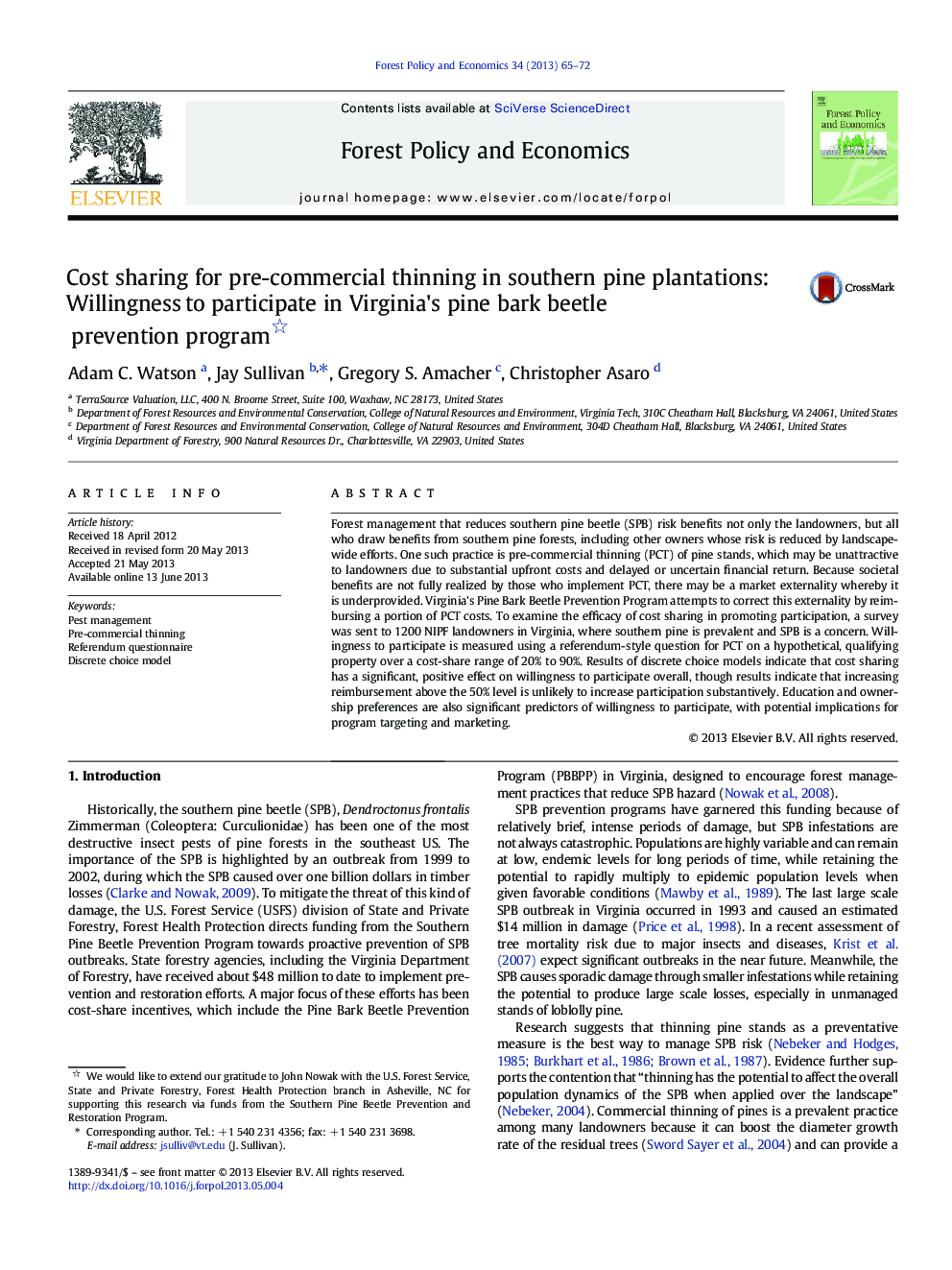| Article ID | Journal | Published Year | Pages | File Type |
|---|---|---|---|---|
| 91967 | Forest Policy and Economics | 2013 | 8 Pages |
•Virginia forest owner survey used to predict willingness to enroll in beetle program•Cost-share, education, and ownership preferences are significant predictors.•Above 50%, cost-share no longer significant which limits additional enrollment gains.•Provides policymakers guidance to design forest risk mitigation programs
Forest management that reduces southern pine beetle (SPB) risk benefits not only the landowners, but all who draw benefits from southern pine forests, including other owners whose risk is reduced by landscape-wide efforts. One such practice is pre-commercial thinning (PCT) of pine stands, which may be unattractive to landowners due to substantial upfront costs and delayed or uncertain financial return. Because societal benefits are not fully realized by those who implement PCT, there may be a market externality whereby it is underprovided. Virginia's Pine Bark Beetle Prevention Program attempts to correct this externality by reimbursing a portion of PCT costs. To examine the efficacy of cost sharing in promoting participation, a survey was sent to 1200 NIPF landowners in Virginia, where southern pine is prevalent and SPB is a concern. Willingness to participate is measured using a referendum-style question for PCT on a hypothetical, qualifying property over a cost-share range of 20% to 90%. Results of discrete choice models indicate that cost sharing has a significant, positive effect on willingness to participate overall, though results indicate that increasing reimbursement above the 50% level is unlikely to increase participation substantively. Education and ownership preferences are also significant predictors of willingness to participate, with potential implications for program targeting and marketing.
